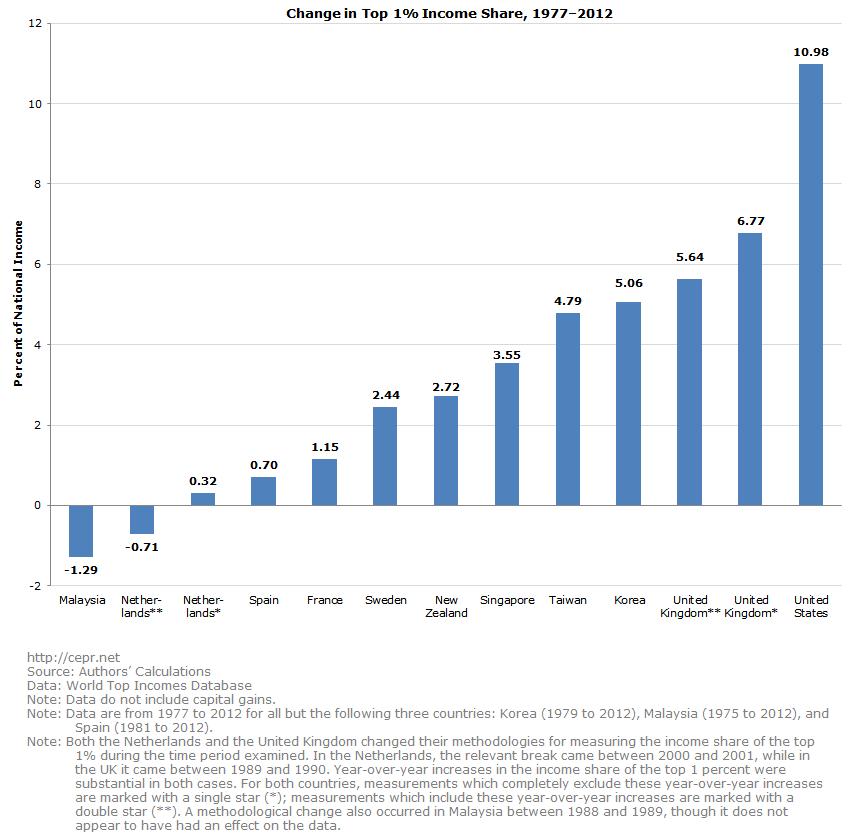October 16, 2015
October 16, 2015
The rise of economic inequality in the U.S. has received growing attention since the Occupy Wall Street movement in 2011. Some commentators have pushed back against the movement’s slogan “We are the 99%” and have argued that rising inequality has more to do with the growing importance of education. However, data on income inequality reveals that the rise of income inequality has less to do with a large number of well-educated Americans pulling away from the rest of the population and more to do with a small portion of the economic elite — the 1 percent — pulling away from everyone else.
Moreover, the increase in the share of income going to the top 1 percent of income earners has no precedent elsewhere amongst advanced economies. This is depicted in the graph below, which shows changes in the share of national income going to the top 1 percent between 1977 and 2012. Data is from the World Top Incomes Database. The only country with 2012 data that is excluded from the graph is Uruguay, as its series only goes back to 2009. Between 1977 and 2012, the top 1 percent income share in the U.S. increased from 7.90 percent of national income to 18.88 percent, excluding capital gains.







